What Is Design Strategy? Design Strategy In A Nutshell
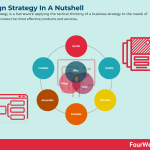
Design strategy is a framework applying the tactical thinking of a business strategy to the needs of the user to create the most effective products and services.
Understanding design strategyDesign strategy involves the creation of a guiding set of principles that articulate the company mission and vision with the design of its products and services.
Put differently, design strategy is a way of translating the intent of a business, product, or service into the experience of that business, product, or service. To that end, the strategy occupies the crucial middle ground between what the business wants and what the people need. It’s important to note that both business goals and user needs must also be aligned with existing technical constraints to develop competitive products.
This means a design strategy must detail:
What success means (and for whom) and how success will be measured. How can both the business and the company win?The problem the company is addressing and why it needs to be solved. How is the company making customer lives easier?The unique value proposition (UVP). What is the company’s competitive advantage?A set of design principles, which we touched on earlier.Why does design strategy matter?On the surface, it may appear design strategy has very little to do with actual design. However, there are tangible links between design strategy and successful design.
How exactly does design strategy add value to a business? Consultancy firm McKinsey and Company decided to find out. After conducting comprehensive and rigorous studies on the subject, they found that:
The companies with the best design strategies increased their revenue at nearly twice the rate of industry competitors. The same can also be said for shareholder returns.There was a strong correlation between high design scores and superior business performance. Businesses were better able to achieve short and long-term goals.The notion of superior design leading to superior business performance is consistent across different industries.The user/customer marketplace disproportionately rewards brands with good design habits. These habits use familiar language to increase trust, brand recall, brand recognition, user satisfaction, and the customer experience.The three core benefits of design strategyAs an addendum to the McKinsey and Company study, let’s now take a look at benefits that help business operations more generally.
Cost-effectivenessDesign strategy enables the organization to clearly define who its target audience is, what they need, and how it can create value for them. Products based on these insights tend to be more successful when released to the market and can easily be improved with subsequent iterations.
Ultimately, the right product is a cost-effective product backed by robust research. Due diligence during the development stage helps the organization avoid a scenario where it has to spend time and money attempting to rescue a failed product. However, as Peter Thiel intimated in his book Zero to One, no amount of iteration will remedy a product that should not have been built in the first place.
DirectionOrganizations that have clear and understandable goals tend to perform better because employees are empowered and engaged to achieve them.
A good design strategy removes the trivial decision-making that can sometimes plague product development. This means the design team has more time to focus on meaningful issues that matter to the customer or increase productivity.
PrioritizationMany businesses proclaim they are user-oriented, but a design team with too much of a user focus can end up developing features that are costly, time-intensive, and only result in modest gains.
In theory, design strategy helps a user-oriented organization focus on product features that strike the best balance between low effort and high reward. This helps the team create the most value for the largest cohort of their target audience and is a far more sustainable approach than the alternative.
Key takeaways:Design strategy is a framework applying the tactical thinking of business strategy to the needs of the user to create the most effective products and services. The strategy occupies the crucial middle ground between what the business wants and what the people need.Design strategies should detail what success looks like for the business and the customer. They should also detail what the problem is and why it needs to be solved. Lastly, it should detail the unique value proposition that gives the business a competitive advantage.Design strategy has many benefits for organizations. In a study conducted by McKinsey and Company, design strategy was linked with increased revenue, superior business performance, and increased consumer trust. More generally speaking, design strategy facilitates cost-effective product development, smarter resource allocation, and feature prioritization.Related concepts to design strategy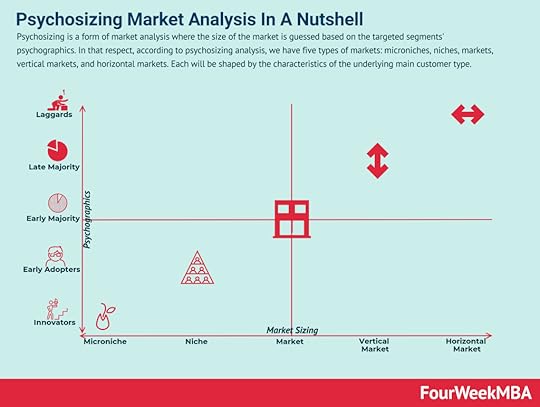 Psychosizing is a form of market analysis where the size of the market is guessed based on the targeted segments’ psychographics. In that respect, according to psychosizing analysis, we have five types of markets: microniches, niches, markets, vertical markets, and horizontal markets. Each will be shaped by the characteristics of the underlying main customer type.
Psychosizing is a form of market analysis where the size of the market is guessed based on the targeted segments’ psychographics. In that respect, according to psychosizing analysis, we have five types of markets: microniches, niches, markets, vertical markets, and horizontal markets. Each will be shaped by the characteristics of the underlying main customer type.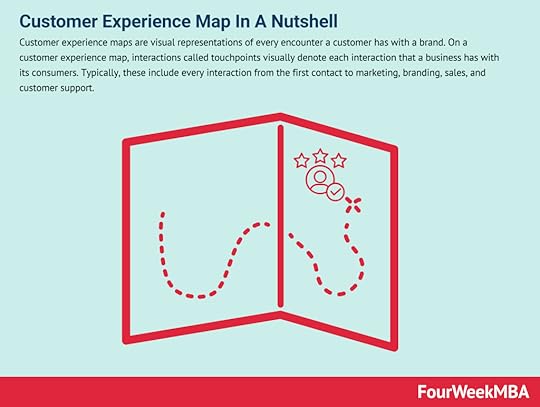 Customer experience maps are visual representations of every encounter a customer has with a brand. On a customer experience map, interactions called touchpoints visually denote each interaction that a business has with its consumers. Typically, these include every interaction from the first contact to marketing, branding, sales, and customer support.
Customer experience maps are visual representations of every encounter a customer has with a brand. On a customer experience map, interactions called touchpoints visually denote each interaction that a business has with its consumers. Typically, these include every interaction from the first contact to marketing, branding, sales, and customer support. The customer journey – sometimes called the buyer or user journey – tells the customer experience with a business, brand, product, or service. A customer journey is an alternative approach to other linear models like the sales funnel which hypothesize that most customers follow the same path.
The customer journey – sometimes called the buyer or user journey – tells the customer experience with a business, brand, product, or service. A customer journey is an alternative approach to other linear models like the sales funnel which hypothesize that most customers follow the same path.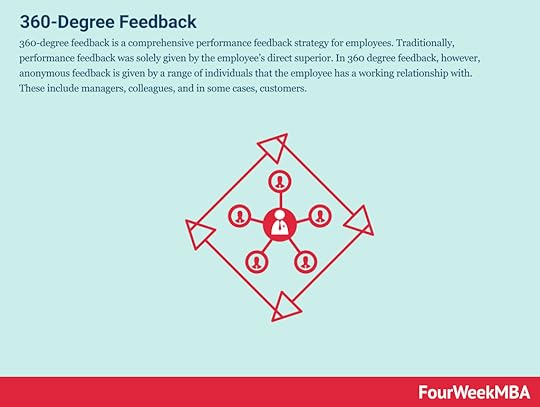 360-degree feedback is a comprehensive performance feedback strategy for employees. Traditionally, performance feedback was solely given by the employee’s direct superior. In 360 degree feedback, however, anonymous feedback is given by a range of individuals that the employee has a working relationship with. These include managers, colleagues, and in some cases, customers.
360-degree feedback is a comprehensive performance feedback strategy for employees. Traditionally, performance feedback was solely given by the employee’s direct superior. In 360 degree feedback, however, anonymous feedback is given by a range of individuals that the employee has a working relationship with. These include managers, colleagues, and in some cases, customers.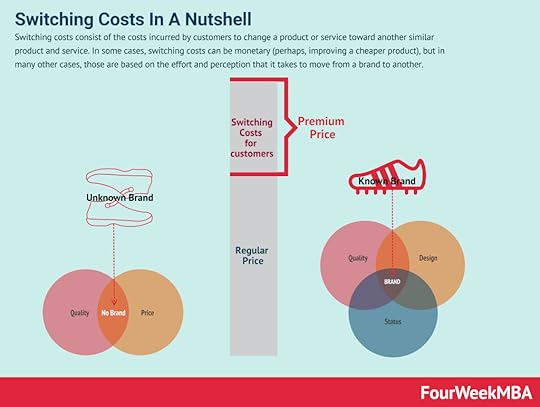 Switching costs consist of the costs incurred by customers to change a product or service toward another similar product and service. In some cases, switching costs can be monetary (perhaps, improving a cheaper product), but in many other cases, those are based on the effort and perception that it takes to move from a brand to another.
Switching costs consist of the costs incurred by customers to change a product or service toward another similar product and service. In some cases, switching costs can be monetary (perhaps, improving a cheaper product), but in many other cases, those are based on the effort and perception that it takes to move from a brand to another.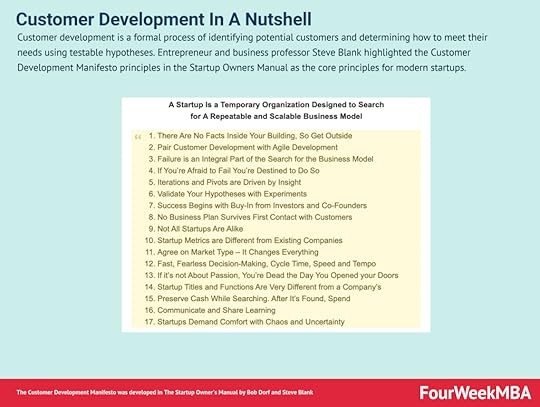 Customer development is a formal process of identifying potential customers and determining how to meet their needs using testable hypotheses. Entrepreneur and business professor Steve Blank highlighted the Customer Development Manifesto principles in The Startup Owner’s Manual as the core principles for modern startups.
Customer development is a formal process of identifying potential customers and determining how to meet their needs using testable hypotheses. Entrepreneur and business professor Steve Blank highlighted the Customer Development Manifesto principles in The Startup Owner’s Manual as the core principles for modern startups.Main Free Guides:
Business ModelsBusiness StrategyBusiness DevelopmentDigital Business ModelsDistribution ChannelsMarketing StrategyPlatform Business ModelsRevenue ModelsTech Business ModelsBlockchain Business Models FrameworkThe post What Is Design Strategy? Design Strategy In A Nutshell appeared first on FourWeekMBA.



